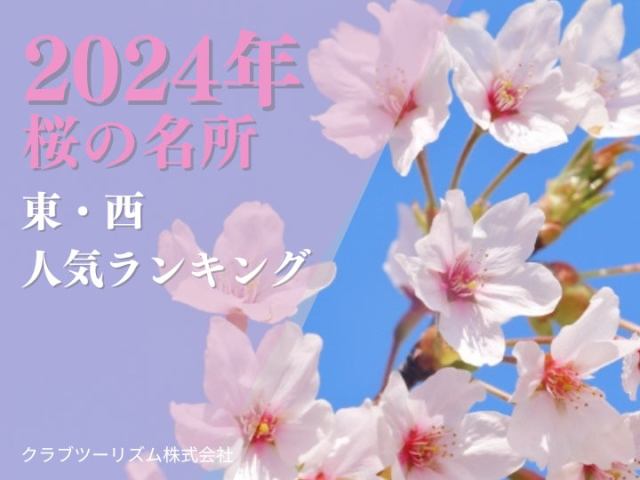
Here are the most popular picks for cherry blossom-viewing in both eastern and western Japan, based on bookings.
With the latest cherry blossom forecast in Japan predicting slightly later blossoming times than initially predicted, travelers in Japan are gearing up for travels to see the best and most beautiful sakura across the country–whether by means of personal travel or professional flower-viewing tours. Japanese travel agency Club Tourism is one such entity that is currently offering no fewer than 124 specialized travel tours with “sakura” in the title on its website. That may already seem like a lot, but the agency further revealed that reservations for these tours are up 152.9 percent this year compared to last year.
So what are the most in-demand sakura sightseeing spots across Japan? Club Tourism revealed its list of locations with the highest number of tour reservations scheduled to depart between March 1 and May 10, the period during which sakura typically reach their peak in most places of the country. The list is also broken into two regions, eastern and western Japan, in case you’d like to try to hit up multiple locations during the same trip.
Eastern Japan Rankings
The timeframe denoted in parentheses refers to when the sakura at that location are typically in bloom.
10. Yamataka Jindaizakura, Yamanashi Prefecture (early April through late April)
9. Mishima Taisha, Shizuoka Prefecture (late March through early April)
8. Arakurayama Sengen Park, Yamanashi Prefecture (early April through mid-April)
7. Oigawa Railway, Shizuoka Prefecture (late March through early April)
6. Kuonji, Yamanashi Prefecture (early April through mid-April)
5. Kamakura, Kanagawa Prefecture (late March through late April)
4. Hirosaki Park, Aomori Prefecture (late April through early May)
3. Miharu Takizakura, Fukushima Prefecture (mid-April through late April)
▼ Miharu Takizakura, Fukushima Prefecture
This weeping cherry tree in Miharu, Fukushima is over 1,000 years old and is designated one of the Three Giant Cherry Trees of Japan. The “taki” in its name refers to a waterfall, as its boughs and branches spread out and appear to overflow with rivulets of blossoms.
2. Kakunodate, Akita Prefecture (late April through early May)
▼ Kakunodate, Akita Prefecture
Kakunodate is a town in northern Akita, nicknamed “Michinoku’s Little Kyoto” (Michinoku is the name given to the north-eastern Tohoku region) due to its wealth of preserved historical structures. In particular, a road of former samurai residences with 400 weeping cherry trees (162 of which are designated as Natural Monuments of Japan) lining either side the street is one of the most famous sakura spots in all of the region. The sakura trees flanking the nearby Hinokinai River are another spectacular sight to behold.
1. Takato Joshi Park, Nagano Prefecture (early April through mid-April)
▼ Takato Joshi Park, Nagano Prefecture
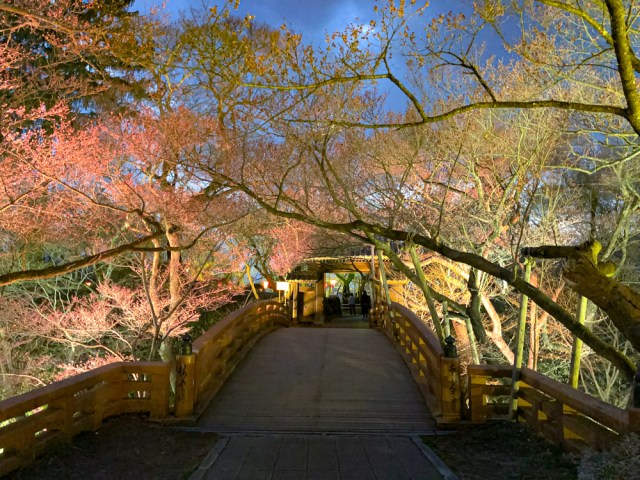
Sometimes dubbed the best place to view cherry blossoms in the whole country, Takato Joshi Park in Nagano is the site of the former Takato Castle. Today, visitors can enjoy breathtaking views of the Japanese Alps between the endless pink blossoms. Local officials estimated that approximately 110,000 people visited the park last year during cherry blossom season after pandemic eating and drinking restrictions were finally lifted.
Western Japan Rankings
The timeframe denoted in parentheses refers to when the sakura at that location are typically in bloom.
10. Takeda Castle Ruins, Hyogo Prefecture (early April through mid-April)
9. Kumamoto Castle, Kumamoto Prefecture (late March through early April)
8. Lake Biwa, Shiga Prefecture (early April through mid-April)
7. Nabana no Sato Flower Garden, Mie Prefecture (late March through mid-April)
6. Sagano Romantic Train, Kyoto Prefecture (late March through early April)
5. Daigozakura, Okayama Prefecture (early April through mid-April)
4. Mount Koya, Wakayama Prefecture (mid-April through late April)
3. Itsukushima Jinja, Hiroshima Prefecture (late March through early April)
▼ Itsukushima Jinja, Hiroshima Prefecture
One of Japan’s most iconic images is the vermillion red torii gate of UNESCO World Heritage Site Itsukushima Shrine rising out of the water in Hiroshima. If you stand on the shrine complex’s western area hill by the two-storied Tahoto Pagoda in the spring, you can look down on the blossoms of 1,900 cherry trees of all different varieties overlooking the torii. Now is also the perfect time for a visit since the famous gate is fully visible again for the first time in 3.5 years after undergoing restoration work.
2. Himeji Castle, Hyogo Prefecture (late March through early April)
▼ Himeji Castle, Hyogo Prefecture
Himeji, often nicknamed “White Egret Castle” for its graceful design, is Japan’s largest and most visited castle. If possible, it’s an even more elegant sight indeed when seen rising above a sea of cherry blossoms. Also easily accessible for travelers in western Japan, Himeji Station in Hyogo is only a 30-minute bullet train ride from Shin-Osaka Station.
1. Mount Yoshino, Nara Prefecture (early April through late April)
▼ Mount Yoshino, Nara Prefecture
Often regarded as Japan’s most famous sakura-viewing spot, Mount Yoshino in Nara boasts 30,000 sakura trees divided into four areas at different elevations that bloom at slightly different times over a three-week span. As a sign of its popularity, Club Tourism revealed that sakura tours on Mount Yoshino received over twice as many bookings as tours at the second-place finisher Himeji Castle. It’s said that 1,300 years ago, locals began donating the sakura saplings to Kinpusenji Temple, an important temple located on the mountain dedicated to the syncretic mountain worship religion Shugendo.
On a final note, if you’ll be in the Tokyo area over the next month and prefer to enjoy the sakura locally, you may be interested in reserving a sakura taxi tour instead.
Source: PR Times
Top image: PR Times
Insert images: PR Times, Pakutaso (1, 2)
● Want to hear about SoraNews24’s latest articles as soon as they’re published? Follow us on Facebook and Twitter!
[ Read in Japanese ]

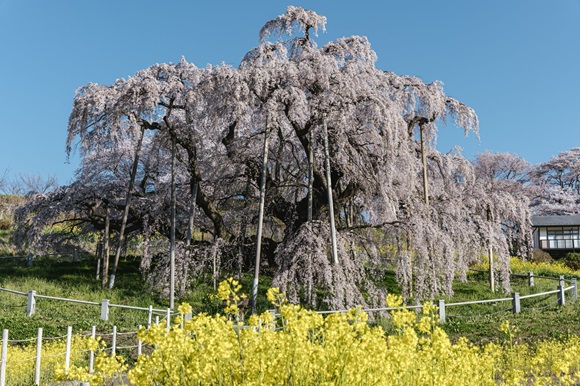
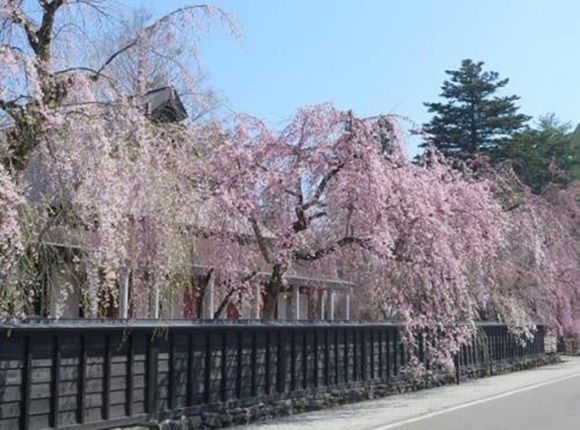
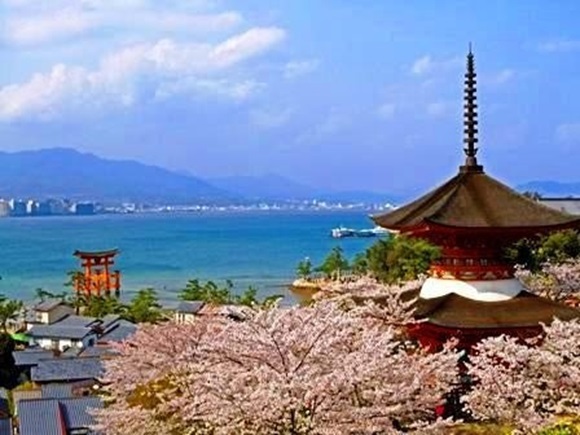
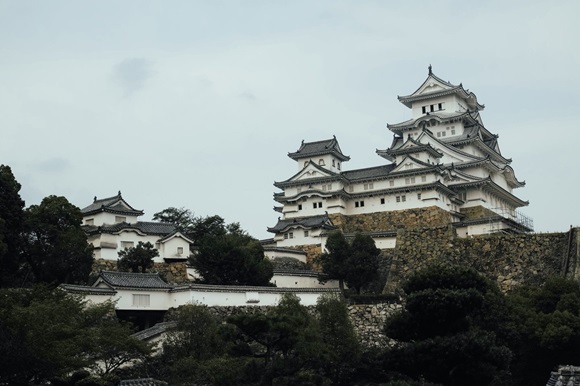
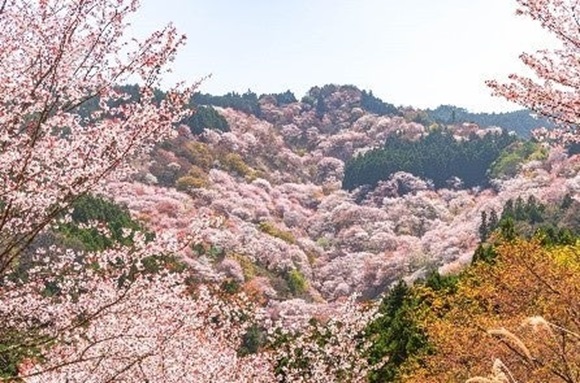
 10 gorgeous, must-visit places to see the autumn leaves in Japan
10 gorgeous, must-visit places to see the autumn leaves in Japan Sakura in Japan 2019: The best spots for hanami cherry blossom viewing
Sakura in Japan 2019: The best spots for hanami cherry blossom viewing Snow Sakura in Japan: A magical hanami cherry blossom viewing experience【Pics & Video】
Snow Sakura in Japan: A magical hanami cherry blossom viewing experience【Pics & Video】 Updated cherry blossom forecast moves up blooming date, predicts sakura season start for Ueno Park
Updated cherry blossom forecast moves up blooming date, predicts sakura season start for Ueno Park Tokyo’s flagship Starbucks in prime cherry blossom spot kicking off sakura season with food, drinks, art
Tokyo’s flagship Starbucks in prime cherry blossom spot kicking off sakura season with food, drinks, art Foreigner’s request for help in Tokyo makes us sad for the state of society
Foreigner’s request for help in Tokyo makes us sad for the state of society Japanese city loses residents’ personal data, which was on paper being transported on a windy day
Japanese city loses residents’ personal data, which was on paper being transported on a windy day Seaside scenery, history, and so many desserts on Yokohama’s Akai Kutsu【Japan Loop Buses】
Seaside scenery, history, and so many desserts on Yokohama’s Akai Kutsu【Japan Loop Buses】 Harajuku Station’s beautiful old wooden building is set to return, with a new complex around it
Harajuku Station’s beautiful old wooden building is set to return, with a new complex around it Should you add tartar sauce to Japanese curry rice? CoCo Ichi makes diners an unusual offer
Should you add tartar sauce to Japanese curry rice? CoCo Ichi makes diners an unusual offer Starbucks Japan releases new mugs and gifts for Mother’s Day
Starbucks Japan releases new mugs and gifts for Mother’s Day Red light district sushi restaurant in Tokyo shows us just how wrong we were about it
Red light district sushi restaurant in Tokyo shows us just how wrong we were about it Smash Bros. director Sakurai stabs Kirby in the face, has delicious justification for it
Smash Bros. director Sakurai stabs Kirby in the face, has delicious justification for it To beard, or not to beard, that is the question. Here are Japanese women’s answers
To beard, or not to beard, that is the question. Here are Japanese women’s answers Akihabara pop-up shop sells goods made by Japanese prison inmates
Akihabara pop-up shop sells goods made by Japanese prison inmates McDonald’s new Happy Meals offer up cute and practical Sanrio lifestyle goods
McDonald’s new Happy Meals offer up cute and practical Sanrio lifestyle goods Japanese ramen restaurants under pressure from new yen banknotes
Japanese ramen restaurants under pressure from new yen banknotes French Fries Bread in Tokyo’s Shibuya becomes a hit on social media
French Fries Bread in Tokyo’s Shibuya becomes a hit on social media Studio Ghibli releases new action figures featuring Nausicaä of the Valley of the Wind characters
Studio Ghibli releases new action figures featuring Nausicaä of the Valley of the Wind characters New private rooms on Tokaido Shinkansen change the way we travel from Tokyo to Kyoto
New private rooms on Tokaido Shinkansen change the way we travel from Tokyo to Kyoto Tokyo Tsukiji fish market site to be redeveloped with 50,000-seat stadium, hotel, shopping center
Tokyo Tsukiji fish market site to be redeveloped with 50,000-seat stadium, hotel, shopping center Beautiful Ghibli sealing wax kits let you create accessories and elegant letter decorations【Pics】
Beautiful Ghibli sealing wax kits let you create accessories and elegant letter decorations【Pics】 Studio Ghibli releases Kiki’s Delivery Service chocolate cake pouches in Japan
Studio Ghibli releases Kiki’s Delivery Service chocolate cake pouches in Japan New definition of “Japanese whiskey” goes into effect to prevent fakes from fooling overseas buyers
New definition of “Japanese whiskey” goes into effect to prevent fakes from fooling overseas buyers Our Japanese reporter visits Costco in the U.S., finds super American and very Japanese things
Our Japanese reporter visits Costco in the U.S., finds super American and very Japanese things All-you-can-drink Starbucks and amazing views part of Tokyo’s new 170 meter-high sky lounge
All-you-can-drink Starbucks and amazing views part of Tokyo’s new 170 meter-high sky lounge More foreign tourists than ever before in history visited Japan last month
More foreign tourists than ever before in history visited Japan last month New Pokémon cakes let you eat your way through Pikachu and all the Eevee evolutions
New Pokémon cakes let you eat your way through Pikachu and all the Eevee evolutions Disney princesses get official manga makeovers for Manga Princess Cafe opening in Tokyo
Disney princesses get official manga makeovers for Manga Princess Cafe opening in Tokyo Sales of Japan’s most convenient train ticket/shopping payment cards suspended indefinitely
Sales of Japan’s most convenient train ticket/shopping payment cards suspended indefinitely Sold-out Studio Ghibli desktop humidifiers are back so Totoro can help you through the dry season
Sold-out Studio Ghibli desktop humidifiers are back so Totoro can help you through the dry season Japanese government to make first change to romanization spelling rules since the 1950s
Japanese government to make first change to romanization spelling rules since the 1950s Ghibli founders Toshio Suzuki and Hayao Miyazaki contribute to Japanese whisky Totoro label design
Ghibli founders Toshio Suzuki and Hayao Miyazaki contribute to Japanese whisky Totoro label design Doraemon found buried at sea as scene from 1993 anime becomes real life【Photos】
Doraemon found buried at sea as scene from 1993 anime becomes real life【Photos】 Tokyo’s most famous Starbucks is closed
Tokyo’s most famous Starbucks is closed One Piece characters’ nationalities revealed, but fans have mixed opinions
One Piece characters’ nationalities revealed, but fans have mixed opinions We asked a Uniqlo employee what four things we should buy and their suggestions didn’t disappoint
We asked a Uniqlo employee what four things we should buy and their suggestions didn’t disappoint Princesses, fruits, and blacksmiths: Study reveals the 30 most unusual family names in Japan
Princesses, fruits, and blacksmiths: Study reveals the 30 most unusual family names in Japan Sakura Skytree photos take Tokyo’s breath away, give kick-start to cherry blossom season【Photos】
Sakura Skytree photos take Tokyo’s breath away, give kick-start to cherry blossom season【Photos】 Super-detailed cherry blossom forecast maps show early arrival for Japan’s 2024 sakura season
Super-detailed cherry blossom forecast maps show early arrival for Japan’s 2024 sakura season Sakura report 2019: First cherry blossoms begin to bloom in Tokyo
Sakura report 2019: First cherry blossoms begin to bloom in Tokyo Cherry blossom forecast 2020 released! Sakura season shifts to new start time in Tokyo this year
Cherry blossom forecast 2020 released! Sakura season shifts to new start time in Tokyo this year Couldn’t catch the cherry blossoms in full bloom? We’ve got a unique idea for you!
Couldn’t catch the cherry blossoms in full bloom? We’ve got a unique idea for you! Seven places that aren’t Starbucks where you can get delicious sakura cherry blossom drinks in Japan
Seven places that aren’t Starbucks where you can get delicious sakura cherry blossom drinks in Japan There’s more to do than just look at the flowers at Tokyo’s biggest riverside sakura celebration
There’s more to do than just look at the flowers at Tokyo’s biggest riverside sakura celebration Sakura season officially declared in Tokyo, earliest start to hanami on record
Sakura season officially declared in Tokyo, earliest start to hanami on record Midwinter “cherry blossoms” are making one of Japan’s best castles even more stunning【Photos】
Midwinter “cherry blossoms” are making one of Japan’s best castles even more stunning【Photos】 Six sensational Starbucks for sakura spectators
Six sensational Starbucks for sakura spectators Japanese travel agency reveals summer 2022’s most popular destinations domestically and abroad
Japanese travel agency reveals summer 2022’s most popular destinations domestically and abroad Sakura begin to bloom in Japan as early cherry blossom season forecast for 2020
Sakura begin to bloom in Japan as early cherry blossom season forecast for 2020 Sakura season 2018 officially declared in Tokyo as first cherry blossoms begin to bloom
Sakura season 2018 officially declared in Tokyo as first cherry blossoms begin to bloom Cherry blossom forecast 2018: Sakura expected to come to Tokyo earlier than usual this year!
Cherry blossom forecast 2018: Sakura expected to come to Tokyo earlier than usual this year! Sakura season officially starts in Tokyo as cherry blossoms begin blooming in the capital
Sakura season officially starts in Tokyo as cherry blossoms begin blooming in the capital Snow sakura! Spring and winter collide as frost and cherry blossoms mingle in Japan 【Photos】
Snow sakura! Spring and winter collide as frost and cherry blossoms mingle in Japan 【Photos】
Leave a Reply